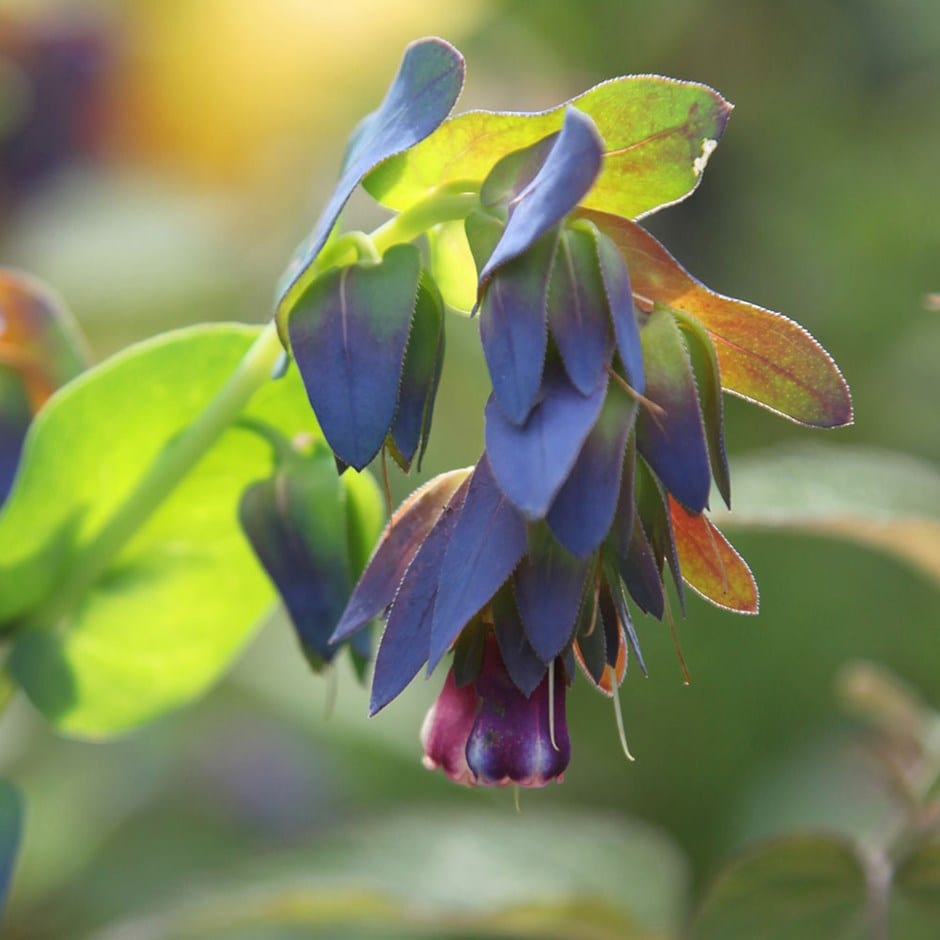Cerinthe major 'Purpurascens'
honeywort
This perennial dies back to below ground level each year in autumn, then fresh new growth appears again in spring.
- Position: full sun or partial shade
- Soil: moderately fertile, moist but well-drained soil, or general-purpose compost for containers
- Rate of growth: fast
- Flowering period: May to August
- Hardiness: h hardy annual or short-lived perennial
Rich purple-blue flowers, which are very attractive to bees, appear from May to August, contrasting beautifully with the fleshy, blue-green foliage. A striking and versatile evergreen plant, in milder areas it will carry on from year to year, but should generally be treated as an annual. Ideal for adding interest to the herbaceous border. Before using in fresh arrangements, dip the ends of the stems in boiling water for thirty seconds.
When planting in beds and borders, mix some well-rotted organic matter with the excavated soil and firm around the plant. Choose a loam-based compost if growing in pots or containers. Water regularly to keep the soil moist but not waterlogged and mulch to retain moisture. Fertilise lightly in spring. Protect from strong winds and provide support if needed. In autumn group container-grown plants close to a warm house wall, ensuring that containers are raised off the ground using pot feet. Cut flowers regularly for the vase to encourage even more to form.
Under glass, sow shallowly in freely draining compost in late winter or early spring. Once the seedlings are large enough to handle, gently move them into individual pots and harden off before planting out in a sunny spot after the frosts. Direct sowing can be undertaken in late spring in a well prepared bed.

